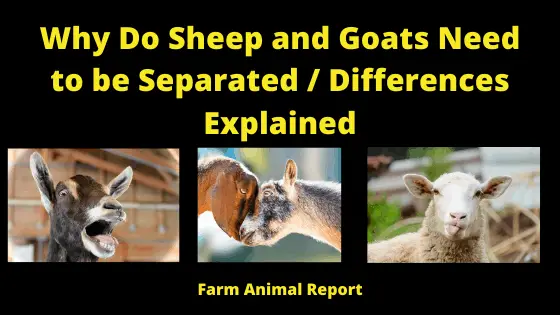As a General Rule Goats need more copper in their diets. Breeds also vary in their sensitivity to copper toxicity. For this reason, it is generally recommended that sheep not be fed grain and mineral mixes that have been formulated for other livestock (including goats), as these feeds likely have copper added to them. This can be toxic to sheep.
Why Does a Shepherd Separate Sheep from Goats
A shepherd separates sheep from goats for many reasons. Goats are browsers and will eat just about anything, including poisonous plants. Sheep, on the other hand, are grazers and will only eat grass. This difference in diet means that sheep and goats can’t share the same pasture without coming into conflict. Goats are also more likely to escape from a enclosure, so they need to be kept separate from the sheep. Finally, goats are generally more aggressive than sheep and will sometimes attack and kill their smaller counterparts. For all these reasons, a shepherd needs to keep sheep and goats separated.
.Do Sheep and Goats Need to be Separated? Sheep and goats are both small livestock animals raised for their wool, hair, or pelts as well as milk and meat. Sheep and goats were the first animals that humans domesticated, and they continue to be among the most popular livestock animals. If you look closely at sheep and goats, you’ll notice their physical differences and be able to distinguish between the two. Why Does a Shepherd Separate Sheep from Goats?
See Amazons Resources on the Science of Raising Goats
A big difference between sheep and goats is their foraging behavior and diet selection. Goats are natural browsers, preferring to eat leaves, twigs, vines, and shrubs. They are very agile and will stand on their hind legs to reach vegetation. Goats like to eat the tops of plants. Sheep are grazers, preferring to eat short, tender grasses, and clover. Why Do Farmers Need Separate Sheep From Goats
Their dietary preference is forbs (broadleaf weeds) and they like to graze close to the soil surface. Goats require and select a more nutritious diet. Sheep also have behavioral characteristics that set them apart from goats.
Do Sheep and Goats Need to be Separated / Appearance / Separating
Sheep have a thicker, fuller coat that needs to be sheared and is the source of wool. Goats can also be sheered to produce mohair and cashmere. Most goats have horns, but sheep do not. Sheep and goats have different mouths, sheep have an upper lip with a division in it called a philtrum, but goats don’t.
Goats have tails that point upwards and sheep have tails that hang down. Sheep tails are often shortened (cropped or docked). Sheep and goats have numerous physical differences. Most goats have hair coats that do not require shearing or combing. Most sheep grow woolly coats that need to be sheared at least annually.
Other important Tags
- shepherds grazed them in mixed flocks
- included both sheep and goats
- sheep graze low only
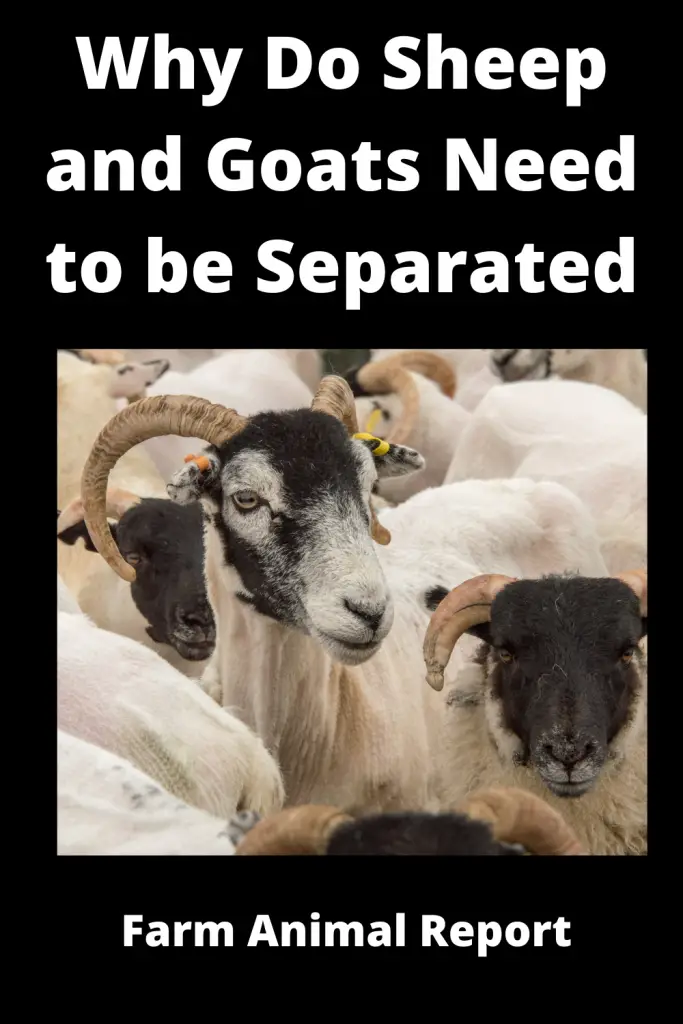
Lamb tails are usually docked (shortened) whereas goat tails are not. Sheep have an upper lip that is divided by a distinct philtrum (groove). The goat does not. Male goats have glands beneath their tail.
Sheep have faced or tear glands beneath their eyes and foot or scent glands between the toes. Male goats develop a distinct odor as they grow in sexual maturity. The odor is very strong during the rut (mating season). Sexually mature rams have much less of an odor.
Behavior
Sheep and goats usually exhibit different behavior. Goats are naturally curious and independent, while sheep tend to be more distant and aloof. Sheep have a stronger flocking instinct and become very agitated if they are separated from the rest of the flock.
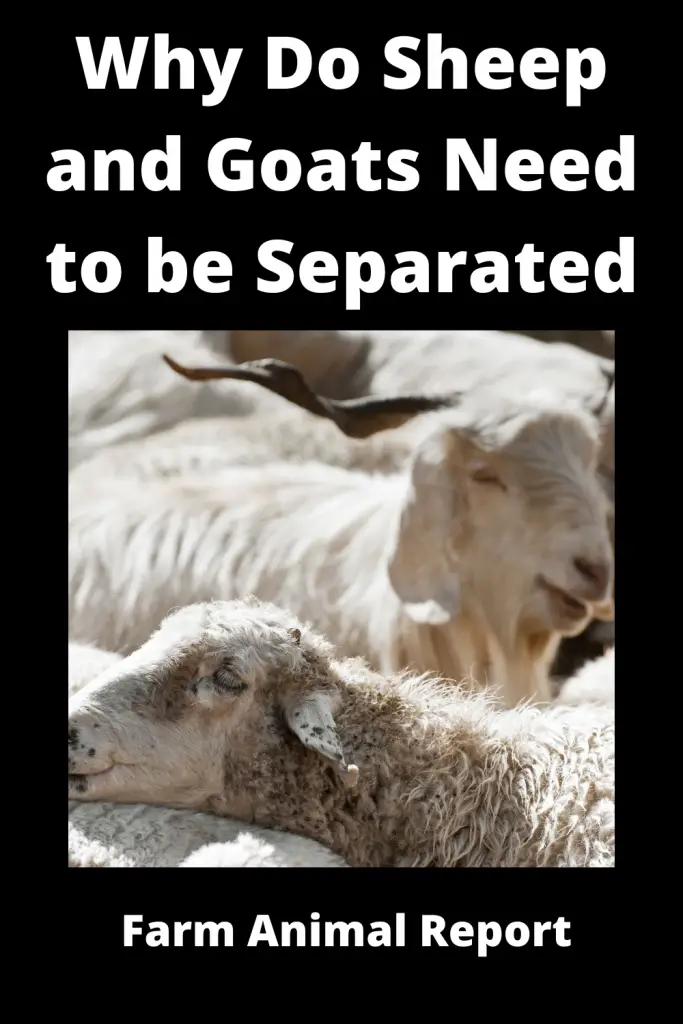
It is easier to keep sheep inside a fence than goats. Sheep are easier to handle than goats. Goats will seek shelter more readily than sheep. Neither species likes to get its feet wet and both prefer upland grazing to lowland. In a fight, a ram will back up and charge to butt heads. A goat will rear up on his hind legs and come downforce ably to butt heads.
During the confrontation, such fighting behavior favors the ram. Sheep are most comfortable with their flock, and they tend to run if approached or spooked. Goats are more independent, intelligent, and tolerant of interaction in general. Sheep like to graze on grass, while goats prefer to graze on anything they can, including leaves, twigs, and anything edible they can reach.
Reproduction
Sheep and goats are separate species and cannot interbreed to produce fertile offspring.
However, scientists can produce genetic chimeras (combinations) of sheep and goats in laboratories. Sheep have 54 chromosomes, and goats have 60 chromosomes.
Horns
Most goats are naturally horned. Some goats have beards. Many breeds of sheep are naturally hornless (polled). Some sheep have manes. Goat horns are narrower, upright, and less curved than sheep horns. Sheep tend to curl their horns in loops on the sides of their heads.
Sheep and Goat Production
Reproduction
There are a few differences in the reproductive systems of sheep and goats. The estrus (heat) cycle of the ewe averages 17 days while the doe’s estrus cycle averages 21 days. Goats are much easier to artificially inseminate (AI) than sheep. There are several reasons why.
Ewes have a more complicated cervix which makes the passage of an insemination rod very difficult. When artificially breeding ewes, frozen semen is usually delivered laparoscopically into the uterine horns. Sheep show few visible signs of estrus as compared to goats.
See Our Guide – 8 Ways to Make Money from Goat Farming
A teaser ram is required to detect estrus or timed inseminations are done after hormonal manipulation.
Though it varies by breed, goats tend to be less seasonal and more prolific than sheep. Male goats have an offensive odor during the mating season; rams do not. The mating rituals of the two species vary, with goats being more demonstrative in their behavior.
See Our Extensive Guide – 16 Ways to Make Money Sheep Farming
Nutrition
Sheep and goats have similar nutrient requirements, though goats have higher maintenance requirements because they are not able to digest the cellulose of plant cell walls as well as sheep.
Lambs tend to grow much faster than kids, no matter what the diet is. Sheep convert feeds more efficiently. Grain-feeding is less likely to be profitable in goat (meat) production.
With the exception of a few breeds, sheep and goats fatten very differently. Goats deposit fat around their internal organs before depositing external fat over their back, ribs, and loin.
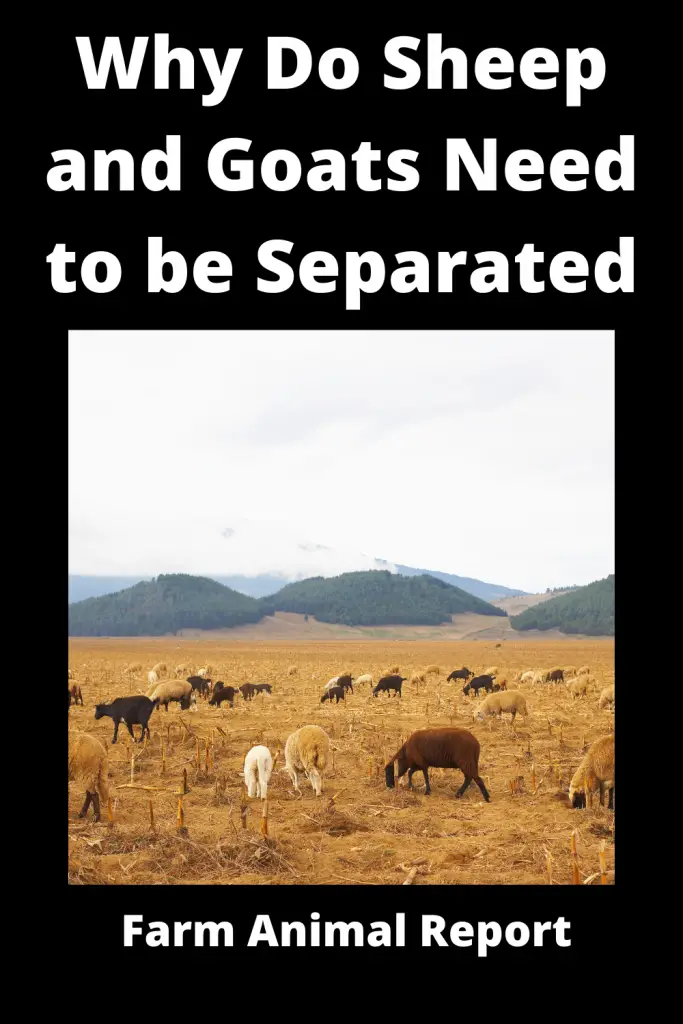
Sheep deposit external fat before depositing internal fat. Finn sheep and hair sheep of tropical origins deposit fat around their organs similarly to goats. Both species require copper in their diet, but with sheep, there is a narrow margin between requirements and toxic levels, though toxic levels depend upon the level of other minerals in their diets.
Breeds also vary in their sensitivity to copper toxicity. For this reason, it is generally recommended that sheep not be fed grain and mineral mixes that have been formulated for other livestock (including goats), as these feeds likely have copper added to them.
It can also be risky to graze sheep on pastures that have been fertilized with poultry or hog manure. Caution should be exercised when using any form of copper as a deworming agent. Additional copper should not be added to the diet of sheep unless a deficiency is confirmed by laboratory tests.
Goats require more copper in their diets than sheep and are not as sensitive to copper toxicity. Their maximum level of copper is considered to be similar to cattle. When co-mingled, sheep products should be fed. It may be necessary to give copper supplements to goats that are co-raised with sheep.
Diseases
Sheep and goats are generally susceptible to the same diseases, including scrapie, which is transmitted via the infected placenta to genetically susceptible offspring Both sheep and goats can serve as an abnormal host for the meningeal worm, a parasite of whitetail deer.
Goats tend to be more susceptible to worms than sheep, due to their origins (in a dry climate) and natural browsing behavior. They are slower to develop immunity (to parasites). Goats also metabolize dewormers more quickly and require higher doses of the drugs.
The clostridial vaccines seem to be less effective in goats than sheep. Tissue reactions (to vaccinations) tend to be more common in goats than sheep. Fewer drugs are FDA-approved for use in goats.
OPP (ovine progressive pneumonia) and CAE (caprine arthritic encephalitis), are similar diseases, caused by a slow virus (like HIV), that affect sheep and goats, respectively. CAE is transmitted mostly via colostrum, whereas OPP is mostly the result of the lateral transfer (animal to animal, usually mature females to replacement ewe lambs). Cross infection is possible
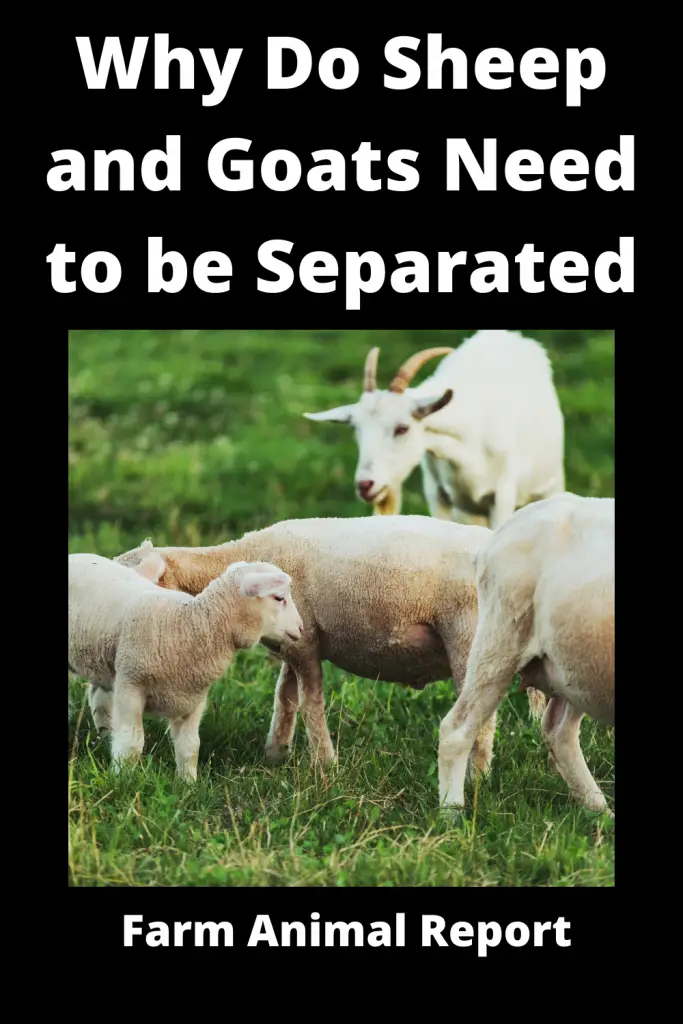
Social dominance
Due to their more aggressive behavior, goats will usually dominate sheep, especially if the goats have horns and the sheep are polled (hornless).
However, when young bucks and rams are maintained together, rams will dominate because the ram will preemptively strike the buck in the abdomen while the buck is still in the act of rearing up.
10 Different Characteristics of Sheep and Goats
Fur; Sheep typically have fluffy wool that requires shearing while goats have flatter hair as their coat and do not usually need to be sheared. (The Caribbean hair sheep is somewhat of an exception.)
Beards; Both male and female goats often have a beard, unlike sheep.
Tails; Sheep tails point downward while goat tails point skyward.
Horns; Most domestic sheep lack horns; they are called polled sheep. If you’re looking at horned life
Eating Habits; Sheep are low-foraging grazers whereas goats are browsers, picking off leaves and other brush from higher levels.
Flock Behavior; Goats are often more independent than sheep, who tend to travel in flocks.
Male Aggression; Aggressive male sheep (rams) attack head-on while angry male goats (bucks) rear on their back legs and then come crashing down with their heads.
Sheltering Behavior; Goats are known to go to shelters more readily than curious sheep, which is also why goats are easier to keep fenced in than sheep.
Mature Male Odor; When male goats reach sexual maturity, they emit a noticeable smell, much stronger than male sheep.
Upper Lip; The upper lip on a sheep is grooved, but a goat is not.
What Special Considerations does a small Farm in Breeding Season when having both Sheep and Goats?
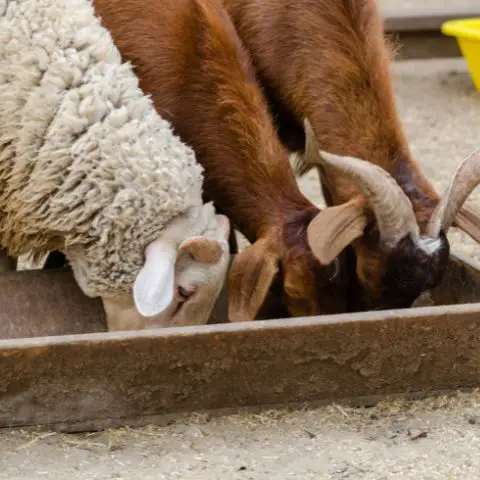
Early spring is breeding season for both sheep and goats, and there are a few special considerations that need to be taken into account when managing a small farm with both species. One is that sheep and goats have different gestation periods, with sheep carrying their lambs for five months and goats carrying their kids for 150 days. This means that lambs will be born in early spring, while kids will not be born until late spring or early summer. As a result, it is important to have separate pasture areas for each species so that the lambs can get the nutrition they need without competing with the kids for food. In addition, goats are much more resistant to parasites than sheep, so care must be taken to prevent cross-contamination between the two herds. With a little extra planning and effort, however, breeding season on a small farm can be a successful and productive time of year.
What Different Needs Do Small Ruminants Have in Transmission of Diseases?
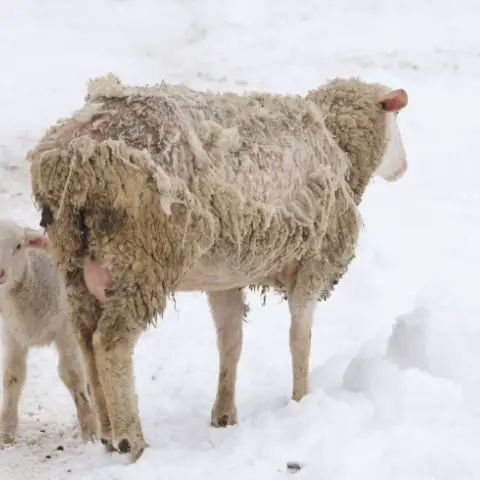
Small ruminants are particularly vulnerable to disease because of their small size and the fact that they graze close to the ground, where they can come into contact with contaminated soil or water. In addition, small ruminants are often kept in close proximity to other animals, which makes it easy for diseases to spread. To help prevent the spread of disease, Parasite Control, Internal Parasites, and small ruminants need to be vaccinated against common diseases such as rabies and anthrax. They also need to be regularly checked for parasites, and their housing should be kept clean and free of manure. In addition, small ruminants should be given access to fresh water and hay on a daily basis. By meeting these basic needs, small ruminants will be better able to resist disease.
Final Thoughts
Sheep and Goats should be separated for some important reasons, Goats are more aggressive and can hurt the sheep. Copper toxicity is different and should be monitored and a special formulated Feed should be given.
Diseases are close to both species, but goats are more susceptible to worms.
Sheep Farming for Wool Profitability Table
| Sheep | Lambs / 3 Per Yr | Space Required 20 Sq Feet - Each | Grazing Acres .3 / Sheep | Feed Required / Yr $100 | 15 Lbs Wool / Year | Average Price $ 10 / LB Wool | Total Revenue Possible |
|---|---|---|---|---|---|---|---|
| 1 | 3 | 60 sq ft | .9 acres | $ 300 | 45 lbs | $ 450 | $ 150 |
| 2 | 6 | 120 sq ft | 1.80 acres | $ 600 | 90 lbs | $ 900 | $ 300 |
| 5 | 15 | 300 sq ft | 4.5 acres | $ 1,500 | 225 lbs | $ 2,250 | $ 750 |
| 10 | 30 | 600 sq ft | 9 acres | $ 3,000 | 450 lbs | $ 4,500 | $ 1,500 |
| 20 | 60 | 1200 sq ft | 18 acres | $ 6,000 | 900 lbs | $ 9,000 | $ 3,000 |
| 30 | 90 | 2,700 sq ft | 27 acres | $ 9,000 | 1,350 lbs | $ 13,500 | $ 4,500 |
| 40 | 120 | 4800 sq ft | 36 acres | $ 12,000 | 1,800 lbs | $ 18,000 | $ 6,000 |
| 50 | 150 | 3,000 sq ft | 45 acres | $ 15,000 | 2,250 lbs | $ 22,500 | $ 7,500 |
| 100 | 300 | 6,000 sq ft | 90 acres | $ 30,000 | 4,500 lbs | $ 45,000 | $ 15,000 |
| 200 | 600 | 12,000 sq ft | 180 acres | $ 60,000 | 9,000 lbs | $ 90,000 | $ 30,000 |
Sheep can Produce 2 - 30 lbs of wool per year depending on Breed
Raw washed Wool Runs $ 6 - $ 14 using average $ 10
Feed 5 Months Buying Hay $ 100 rest Grazing
Please Check my Numbers
Sheep Farming for Milk Profitability Table
| Sheep | Lambs / 3 Per Yr | Space Required 20 Sq Feet - Each | Grazing Acres .3 / Sheep | Feed Required / Yr $100 | Wool $ 15 lb / Year | Average Price $ 10 / LB Wool | 90 Gallon/ Yr each ewe | Price $ 30 per Gallon | Total Wool Revenue Possible | Total Revenue Milk and Wool |
|---|---|---|---|---|---|---|---|---|---|---|
| 1 | 3 | 60 sq ft | .9 acres | $ 300 | 45 lbs | $ 450 | 270 | 8100 | $ 150 | 8,250 |
| 2 | 6 | 120 sq ft | 1.80 acres | $ 600 | 90 lbs | $ 900 | 540 | 16,200 | $ 300 | 16,500 |
| 5 | 15 | 300 sq ft | 4.5 acres | $ 1,500 | 225 lbs | $ 2,250 | 1350 | 40,500 | $ 750 | 41,250 |
| 10 | 30 | 600 sq ft | 9 acres | $ 3,000 | 450 lbs | $ 4,500 | 2700 | 81,000 | $ 1,500 | 82,500 |
| 20 | 60 | 1200 sq ft | 18 acres | $ 6,000 | 900 lbs | $ 9,000 | 5400 | 162,000 | $ 3,000 | 165,000 |
| 30 | 90 | 2,700 sq ft | 27 acres | $ 9,000 | 1,350 lbs | $ 13,500 | 8100 | 243,000 | $ 4,500 | 247,500 |
| 40 | 120 | 4800 sq ft | 36 acres | $ 12,000 | 1,800 lbs | $ 18,000 | 10,800 | 324,000 | $ 6,000 | 330,000 |
| 50 | 150 | 3,000 sq ft | 45 acres | $ 15,000 | 2,250 lbs | $ 22,500 | 13,500 | 405,000 | $ 7,500 | 412,500 |
| 100 | 300 | 6,000 sq ft | 90 acres | $ 30,000 | 4,500 lbs | $ 45,000 | 27,000 | 810,000 | $ 15,000 | 825,000 |
| 200 | 600 | 12,000 sq ft | 180 acres | $ 60,000 | 9,000 lbs | $ 90,000 | 54,000 | 1,620,000 | $ 30,000 | 1,650,000 |
Sheep can Produce 1/2 Gallon Milk per day / 180 Day Lactation
Raw Sheep Milk $9 - $25 per Quart - Used $ 30 per Gallon for Table
Feed 5 Months Buying Hay $ 100 rest Grazing
Please Check my Numbers
18 Breeds of Hair Sheep FAQ Table
| Hair Breeds of Sheep | Country Origin | Purpose of Breed | Use | Ewe Weight |
|---|---|---|---|---|
| Katahdins | Caribbean / Maine / Africa | To Graze Power lines / instead of Chemicals | Meat | 120 - 160 lbs |
| Dorper | South Africa | Thrive in Africa / Hot Climate | Meat / Fast Growing | 230 LBs |
| Blackbelly | America | Hot Climates | Meat | 150 LBs |
| St. Croix | Carribean | Came on Ships for Meat for sailors | Meat | 150 lbs |
| Romanovs | Russia | Primarily for Meat | Meat Wool - Double Coated | 110 lbs |
| Blackhead Persian | Africa / Somaila | Bred for High Quanity of Fat | Meat | 120 lbs |
| West African Dwarf | South / Central Africa | Meat | 55 lbs | |
| Red Maasi | East Africa | Bred for Hardiness and parasite Resistance | Meat | 77 Lbs |
| Wiltshire Horn | England | Do not suffer from Flystrike | Meat | 149 lbs |
| Royal White | United States / Texas | Bred for Tender Meat and Disease Resistants | Meat | 175 lbs |
| California Red | Not completely Hair sheep/ Combination of both/ Prod 2 lambs Yr | Meat | 140 lbs | |
| Damara | Egypt | Vigorous with fast growing / in extreme conditions | Meat | 110 lbs |
| Pelibuey | Cuba / Mexico | Tropical Sheep | Meat | 75 lbs |
| Africana | Columbia / Venezula | Meat | 110 lbs | |
| Morada | Brazil | Survive Scrub | Meat | 66 lbs |
| Brazillian Somaila | South Africa / Somali | Meat | ||
| Uda | Africa | Long Legged Sheep | Meat | 88 lbs |
| Touabire | Africa | Dairy / Meat | 77 lbs |
Minature Breeds of Sheep
| Breed | Height | Weight / Full Grown | Food Per Day | Lifespan | Wool / Hair Sheep | Cost |
|---|---|---|---|---|---|---|
| Quessant Sheep | !8" | 28 - 30 Lbs | 1/2 - 1lb | 10 - 12 Yrs | Wool | $ 350 - 450 |
| Baby Doll Southdown | 18" | 75 lbs | 2 - 3 Lbs | 10 - 12 Yrs | Wool | $ 350 -450 |
| Southdown Sheep | 18" - 24" | 130 lbs | 6 - 6 lbs | 10 - 12 Yrs | Wool | $ 180 - $ 600 |
| Cheviot Sheep | 20" | 130 Lbs | 6 - 6 lbs | 10 - 12 Yrs | Wool | $ 180 - $ 600 |
| Border Cheviot | 20" | 130 lbs | 6 - 6 lbs | 10 - 12 Yrs | Wool | $ 180 - $ 600 |
| Shetland Sheep | 24" | 75 - 100 lbs | 6 - 6 lbs | 10 - 12 Yrs | Wool | $ 50 - $100 |
| Navajo - Churro | 20" | 110 lbs | 6 - 6 lbs | 10 - 12 Yrs | Wool | $ 200 |
Amount of Food they Need
Lifespan
Wool - They Need to be Sheared Hair Sheep - Do not Grow Woll but shed Hair once a year
Pricing Depend whether you just want Sheep Or you want to Breed
Sheep Associations 10 Breeds of Sheep
| Breeds of Sheep | Country Origin | Purpose of Breed | Use | Ewe Weight | Association For Info |
|---|---|---|---|---|---|
| Suffolk Sheep | Britian / Suffolk | Fast Growing | Meat | 250 - 350 Lbs | United Suffolk Sheep Association |
| Merino Sheep | Spain | Softest Wool | Wool | 100 - 200 Lbs | American and Delane Merino Sheep Association |
| Hampshire | Britain | Best Tasting Mutton | Wool / Meat | 200 Lbs | American Hampshire Sheep Association |
| Romney | England / Romney Marsh | Disease Resistance | Wool / Meat | 225 - 275 Lbs | American Romney Breeders Association |
| Lincoln Sheep | England | Produce Longest Fleece In World | Wool | 250 - 350 Lbs | National Lincoln Sheep Breeders Association |
| Dorper Sheep | South African | Fast Growing Meat | Meat | 230 Lbs | American Droper Sheep association |
| Turcana Sheep | Romainia | Adapted Alpine Pasture | Wool / Milk / Meat | 175 - 200 Lbs | ? |
| Rambouilette Sheep | France | Strong / Hearty / All Climates | Wool / Meat | 300 Lbs | American Rambouilette Sheep Breeders Association |
| Leicester Longwool | United Kingdom | Fast growing / Good Fleece | Wool | 200 Lbs | Leicester Longwool Sheep Breeders Association |
Goat Breeds
| Goat Breeds | Meat | Dairy | Wool | |
|---|---|---|---|---|
| Boer | Alpine | Angora | ||
| Genemaster | Lamancha | Cashmere | ||
| Kiko | Nigerian Dwarf | Pygora | ||
| Kinder | Nubian | |||
| Myotonic | Oberhasil | |||
| Pygmy | Saaneen | |||
| Savanna | Sable | |||
| Spanish | Toggenburg | |||
| Tennessee Meat Goat | ||||
| TexMaster |
Goat Breeder Associations
| Goat Association | Location | Link |
|---|---|---|
| American Goat Breeders Association | United States | AGF |
| English Goat Breeders Association | UK | EGBA |
| Canadian Meat Goat Association | Canada | CMG |
| Minature Goat Breeders Association | Australia | MGBA |
| Boer Goats | South Africa | BGSA |
| American Boer Goat Association | United States | ABGA |
| World Goat Breeders Associations | List | WGBA |


